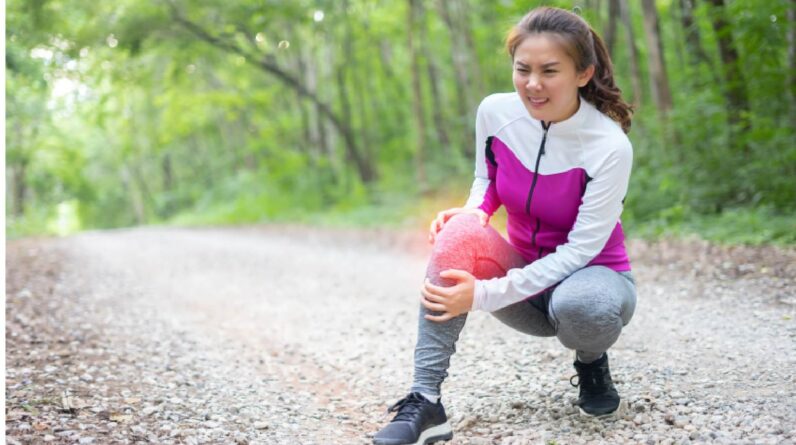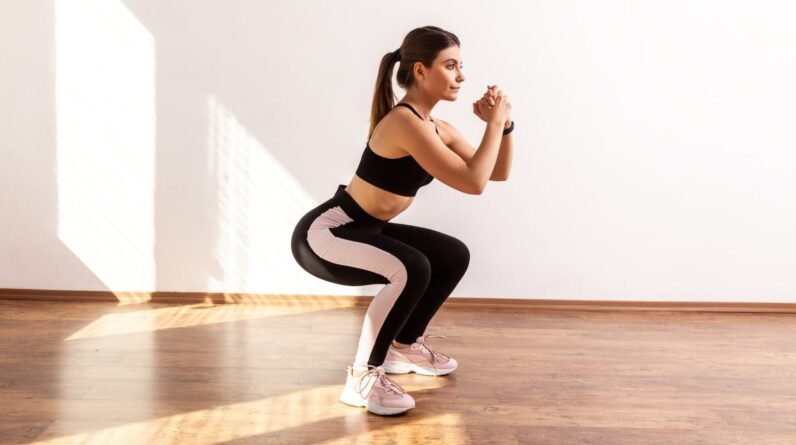
Runner’s knee is more common than you think! Here’s what you need to know about this common condition in people who practice running.
You just strated running and slowly increasing your pace to run faster and stay fit. Suddenly, the front of your knee called the kneecap starts paining and the pain does not go away. The pain continues to grow the next day when you run. Well, if your knee pain gets worse with every run, you may have runner’s knee which is a common condition that leads to pain in the front of the kneecap. While it can affect anyone, it is more common in people who ski, play soccer or basketball, hike, do mount climbing or running. Not to worry, runner’s knee can be treated and get better with the right treatment and strategy.
What is runner’s knee?
Also known as patellofemoral pain syndrome (PFPS), runner’s knee is a common condition that causes pain around the patella or kneecap. As the name suggests, it is more common in runners but can also occur in other athletes and active individuals. As per John Hopkins Medicine, PFPS can be caused by structural defect or a certain way of walking or running. Women are more likely to experience runner’s knee than men and it is more common in people who are overweight, according to the data by Harvard Medical School.

What are the symptoms of runner’s knee?
According to John Hopkins Medicine, the signs and symptoms of the condition include:
1. Pain around the kneecap
An excruciating pain around or behind the patella or kneecap, particularly where it connects to the bottom portion of the thighbone, or femur, is the characteristic sign of runner’s knee. While this is the basic symptom, you may not feel this pain all the time. It commonly occurs when you are climbing the stairs, kneeling, running, or walking.
You may also like


How to manage arthritis and joint pain: Effective tips for knee pain relief
2. Stiffness
The cartilage in your kneecap gets irritated when you have runner’s knee and this causes your knees to feel stiff. This happens especially after sitting for long periods.
3. Swelling
Runner’s knee can also lead to irritation or inflammation around the kneecap, which is often a result of overuse, bursitis, tendonitis, and fluid accumulation. If you experience swelling along with pain, it is advisable to take rest, try icing the area and consult a healthcare provider to get proper treatment.
4. Grinding or popping sensation
Do you hear a popping or grinding noise when you bend or straighten your knee? It may be a sign of runner’s knee and you should get it checked immediately. Inflammation, cartilage wear, patellar tracking issues, tendon or ligament movement, and gas bubbles in your joints may lead to this problem if you have runner’s knee.
5. Increased pain during activity
If you have this condition, the pain usually worsens with activities that put pressure on the knee, such as running downhill or sitting with bent knees. This is usually a result of putting too much pressure while having this condition. Muscle imbalance, inflammation and high-impact activities can make the condition worse.
What are the causes of runner’s knees?
A lot of factors can lead to runner’s knees, including:
- Irritation of the soft tissues or lining of the knee
- Overuse
- Misalignment of the kneecap
- Weak or tight thigh muscles
- Flat feet or high arches
- Not stretching before exercise
- Worn-out or inappropriate shoes
- Arthritis
- A fractured kneecap
- Knee injuries
- Plica syndrome, also known as synovial plica syndrome, is a condition where the joint lining thickens and becomes inflamed.
In some cases, pain may begin in the back or hips and transmitted to the knee, which is known as “referred pain.”
Diagnosis and treatment of runner’s knees
Your doctor will ask your history, conduct a blood test, X-rays, an MRI scan, or a CT Scan to know if you have runner’s knee. After diagnosis, your doctor will tailor your treatment according to your condition. RICE is a common treatment approach that may help you get treatment:
- Rest: Do not indulge in activities such as high-impact activities that may aggravate knee pain.
- Ice: Apply ice to the affected knee for 15-20 minutes every couple of hours. It can help reduce inflammation and numb the pain.
- Compression: Use an elastic bandage or knee sleeve to compress the knee, which can decrease swelling and provide support.
- Elevation: Keep the knee elevated above heart level when resting to help reduce swelling and deal with runner’s knee.
Other treatment options include:
- Nonsteroidal anti-inflammatory medications (NSAIDs): Your doctor may recommend NSAIDs such as ibuprofen, diclofenac, aceclofenac or etoricoxib, to help you deal with pain and swelling. However, you should only take it with your doctor’s recommendation.
- Exercise: Doing stretching and strengthening exercises may help stretch your muscles and may provide some relief.
- Try arch support: They could be useful for your foot position. They can be custom-made or you can buy them from a medical store.
Surgery is generally recommended when your kneecap is realigned or cartilage is damaged.

Can you prevent runner’s knees?
Runner’s knees can be prevented and here are some steps recommended by the American Academy of Orthopedic Surgeons that can help you:
- Maintain a healthy weight to avoid putting too much strain on your knees.
- Do a warm-up exercise before you run or do any type of stretching. It will improve your knee’s flexibility and prevent irritation.
- Do not rush into any exercise. Increase the intensity of the exercise gradually.
- Use proper shoes for every exercise you do. It should sit comfortably and properly. Be extra careful if you have flat feet.
- Your running form matters! So, keep your core tight, do not lean forward or backward while running, keep your knees bent, and run on a smooth surface to avoid knee problems.
Runner’s knee can be avoided if you practice caution and notice the initial symptoms of the condition to avoid it.







